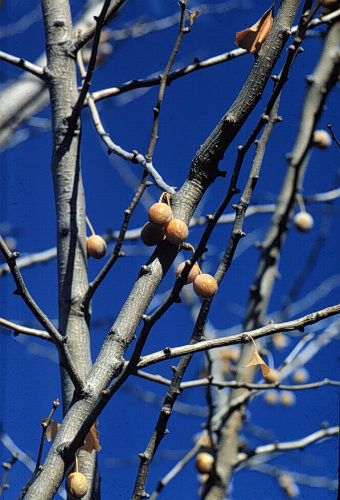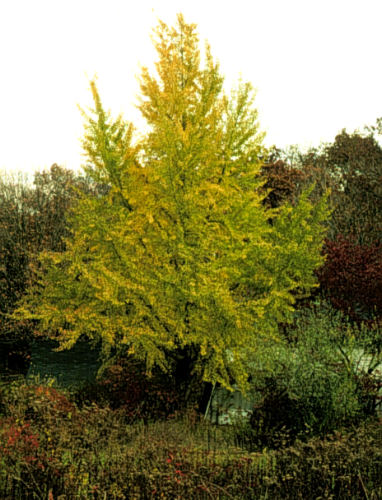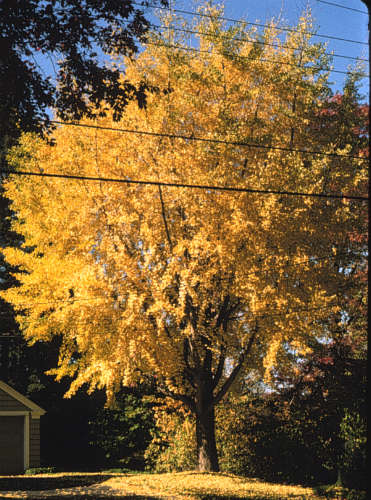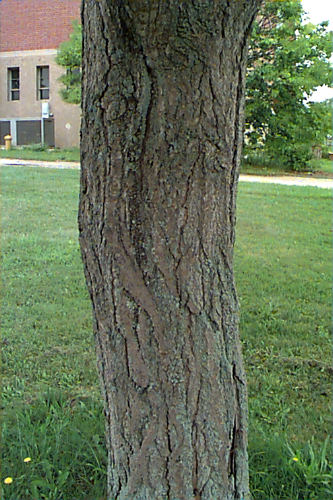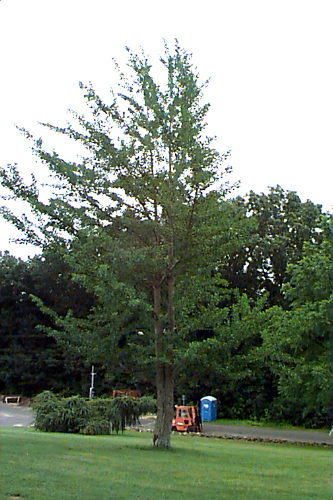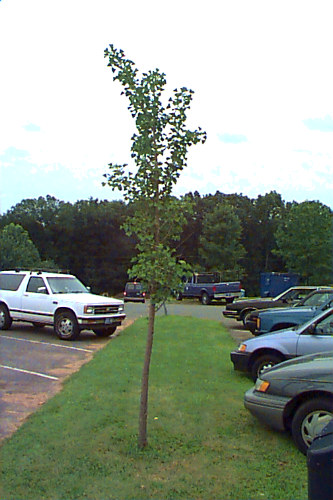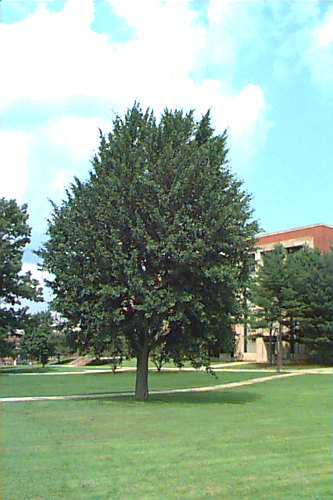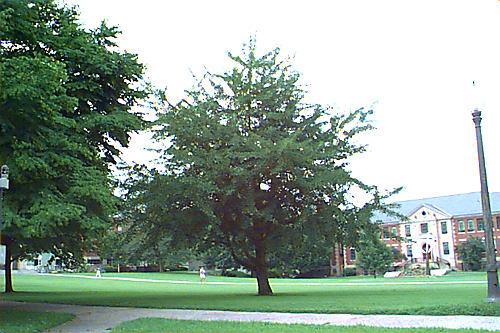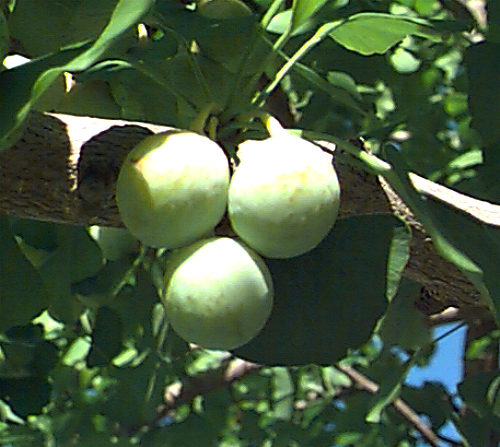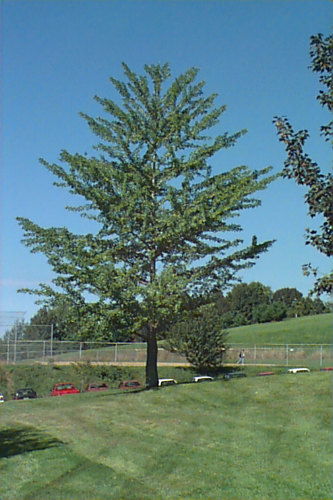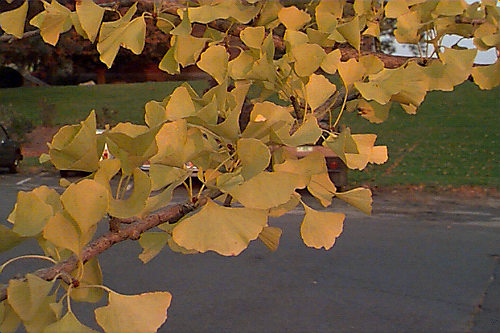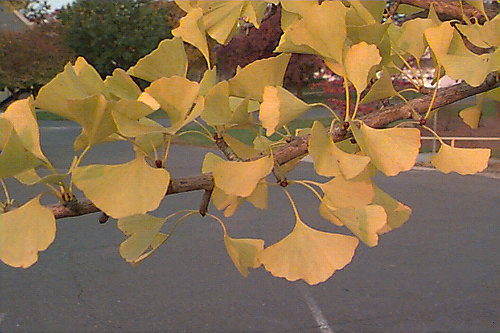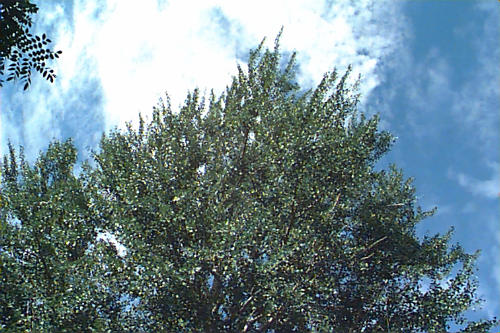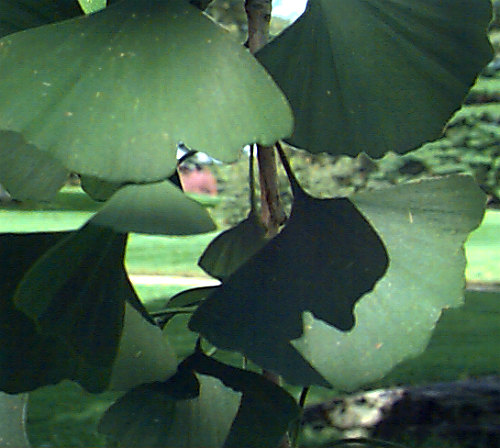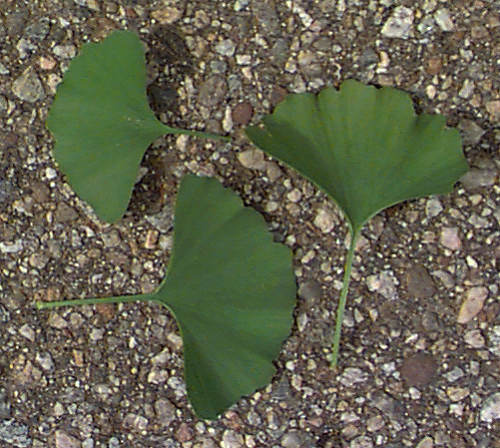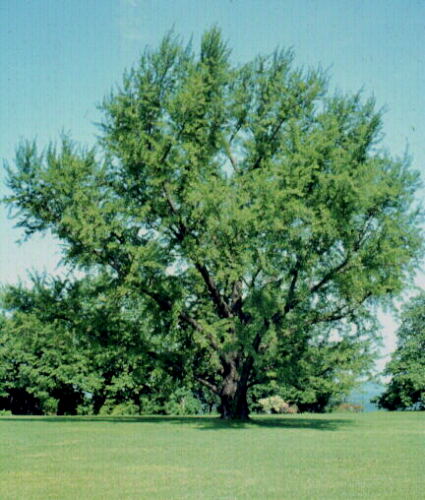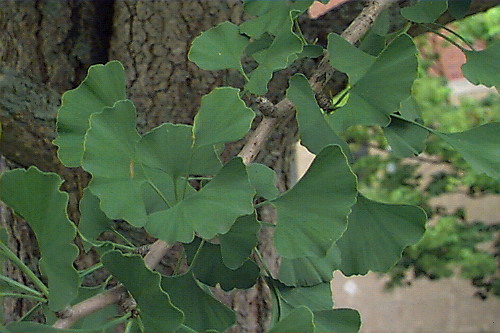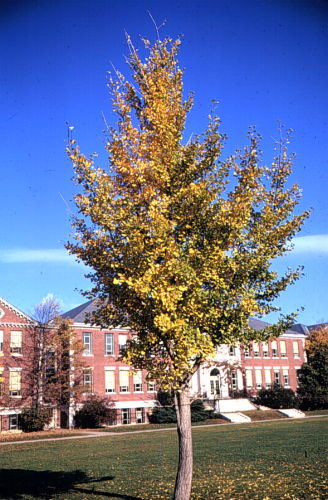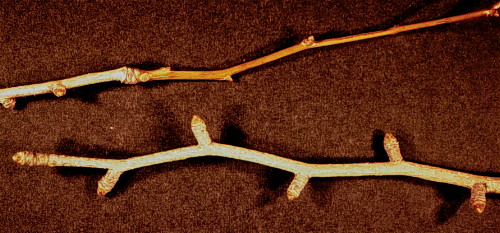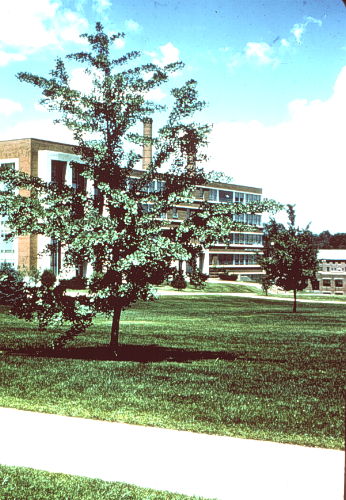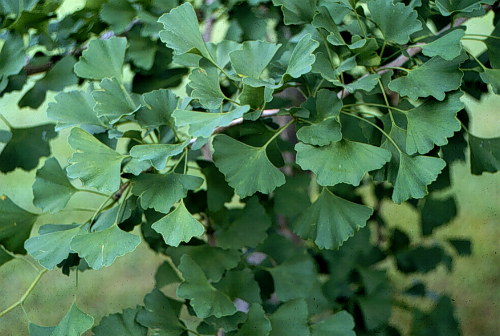Ginkgo biloba
Ginkgo, Maidenhair Tree
Ginkgoaceae
ExpandHabitat
- native to Eastern China
- zone 3
Habit and Form
- deciduous
- a large tree
- 40' to 80' tall by 30' to 40' wide, tree is generally taller the further north it is planted
- medium texture, rather coarse in winter
- conical form when young, spreading lateral branches with age
Summer Foliage
- alternate, simple, 2"-3" long, triangular in shape
- leaves are on spurs in clusters of 3-5
- Fan shaped, with parallel leaf margins and notched at apex
- bright green color
Autumn Foliage
- excellent yellow color
- leaves drop quickly, especially following a freeze
Flowers
- not considered an ornamental feature
- dioecious
- male: 1" long catkin in April
- female: green, naked ovules
- trees may not flower until 20 years old
Fruit
- naked seed produced on female tree only
- clusters of 2-6
- light orange to tan color
- flesh covering seed has a foul smell, often described as rancid butter
Bark
- grey to brown
- ridged
Culture
- prefers deep sandy soils and moderate moisture
- adaptable to pH and almost any other conditions
- full sun
- tolerant of pollution, salt air, and heat
- prune in spring
- pest free
Landscape Uses
- specimen
- good for large open area
- good shade tree
- possibly a street tree
- only male clones should be planted, female is outlawed in some areas of United States
Liabilities
- no serious insect or pest problems
- female plants have a foul smelling fruit
- can be slow to become established following transplanting
ID Features
- leaves triangular and may be 2 lobed
- parallel veins
- spurs with brown imbricate buds
- fruit
Propagation
- by seed, collect in fall (cold stratification is benefical)
- can also be done by softwood or semihardwood cuttings, collect in early summer
- cultivars are propagated mainly by grafting
Cultivars/Varieties
'Autumn Gold' (perhaps Autumn Gold™) - This male (non-fruiting) selection is common in the trade and notable for its symmetrical crown that is broad and rounded. The mature size is 50' tall with a 30' spread and fall color is an excellent deep yellow.
'Jade Butterfly' - An unusual dwarf, slow-growing form, this plant has bright green leaves and a mature height that is less than half that of standard forms. It's an introduction out of New Zealand that is gaining popularity.
'Magyar' - An introduction that is gaining momentum in the trade, this plant is a non-fruiting male with upright, ascending branching to 60' tall and half as wide. It is well-suited to urban planting as a street tree.
'Pendula' (also listed as f. pendula) - Plants listed under this name are quite variable, with few expressing a strong weeping habit. Most bear branches that are horizontal or droop slightly
'PNI 2720' (Princeton Sentry®) - A very popular non-fruiting male form, this form assumes an upright habit that tapers to the point. It reaches 60' tall, but only 25' wide.
'Saratoga' - Commonly offered, this plant has a strong central leader and an upright, narrow habit (40' tall and 30' tall).
'Variegata' - Many different clones are offered under this name, but most feature leaves that are irregularly streaked with yellow.
